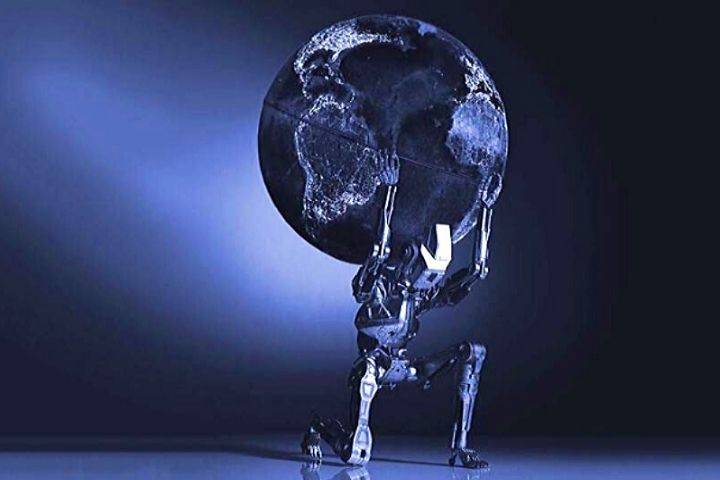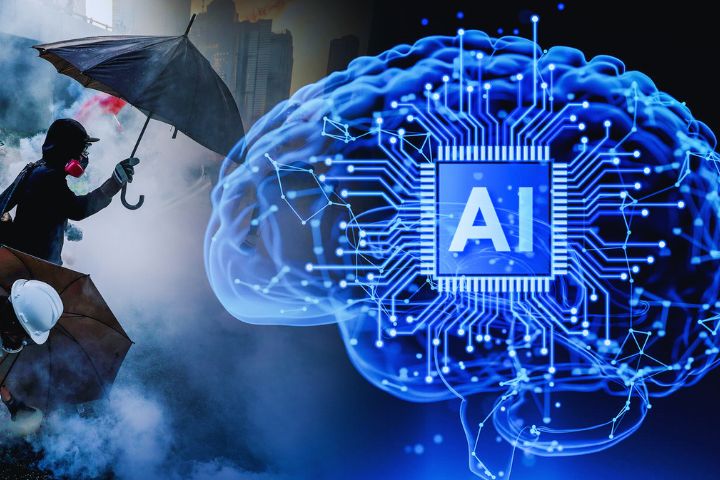A report on Artificial Intelligence depicts a scenario in which machines “exhibit in the next 20 years, widely applicable intelligence comparable to or superior to that of humans.” This is a study carried out in 2016 and has now been updated by AI experts from the United States and which concludes by saying that “machines will achieve and exceed human performance in more and more tasks.”
However, the authors of the aforementioned study rule out that on the horizon of the year 2040 we come to live with computational models as complex as the human being. But before we get to that point, we must begin a journey to understand the origin and applications of AI.
First Contact With Artificial Intelligence
Artificial Intelligence seeks an explanation of mental functioning based on the development of algorithms to control different things. Thus, we must understand it as a set of algorithms capable of allowing a machine to think and carry out tasks and processes that the human mind has developed in the first order.
On this basis, we have to see AI as the compilation of fields ranging from robotics and expert systems to others such as neural networks, process control, and genetic algorithms. All of them start from the same objective: “the creation of machines that can think for themselves.” A science fiction that is already more than a reality.
Who has not ever talked to a computer or requested information of any kind from their smartphone? Unknowingly, many of us have had contact with that level of ‘ thinking or intelligent machine ‘ long before we are able to remember.
Types Of Artificial Intelligence
There are four types of Artificial Intelligence. The overall ranking takes into account what experts define as a broad view of advances in Artificial Intelligence (AI) research. A kind of consensus that comes to say “that intelligent and sensitive machines are getting closer.”
Also Read: Is Artificial Intelligence The Future Of Public Relations (PR)?
1. Reactive Machines
The most basic AI systems are framed in this section and are fully reactive and without any ability to form memories. Nor do they take past experiences as a reference to dictate current decisions.
The biggest example of this type of AI is Deep Blue. A supercomputer created by IBM in the late 1990s. A reactive machine that managed to win chess, nothing more and nothing less, than the international master Garry Kasparov.
Thus, he based his departure on predictions about the best movements and elections based on the analysis of all possibilities. An accurate choice in real-time, but from which Deep Blue did not generate any memory.
2. Limited Memory
As its name suggests, these are machines capable of looking at the past with short-term memory and able to detect behaviors or actions and anticipate a response.
As its name suggests, these are machines capable of looking at the past with a short-term memory capable of detecting behaviors or actions and anticipating a response.
The best example of this type is the autonomous vehicle capable of guiding driving based on observing the speed and direction of previous routes. The vehicles add to their limited memory issues such as the order of traffic lights, the state of the road, curves, or speed limitations, among others. Theory of the mind.
In this section are the AI systems that are posed in the present and the future. These are more advanced machines, capable of having an understanding of human thinking and behavior.
Also Read: Artificial Intelligence Will Change The Future Of Human Resources
3. Theory of Mind
In this section are the AI systems that are considered in the present and the future. These are more advanced machines, capable of having an understanding of human thinking and behavior.
A kind of repetition of the human self, capable of knowing what we are looking for at a certain moment and even how we want to be treated.
4. Self-Awareness
Creating machines capable of forming representations of themselves is the goal of AI as a final step in its development. To reach this point, it will be necessary to create devices capable of understanding consciousness and equipping it.
At this point, some experts differ about the need for machines that are self-aware and act as humans do. However, many AI experts focus their efforts on memory understanding, learning, and the ability to base decisions on past experiences.
Application Of Artificial Intelligence
AI began to take its steps in the late 50s of the 20th century, and 70 years after that moment, what for many was science fiction is a reality present in the day to day with unstoppable progress.
Thus, different areas of application of AI are distinguished among which are:
- Process control and management: analysis in an intelligent way, determination of objectives.
- Manufacturing: design, planning, programming, monitoring, control, project management, simplified robotics, and computer vision.
- Cartography: interpretation of spaces and photographs, design, identification of cartographic problems.
- Professions: Medicine, Accounting, Geology, Archeology, Chemistry.
- Software: design, verification, maintenance.
- Weapons systems: target identification, image processing.
- Finance: planning, analysis, consulting.
- Education: exams and diagnosis.
- Engineering: design, control, and analysis.
- Equipment: design, diagnosis, maintenance, configuration, monitoring, and sales.
Based on these application areas, we see how Artificial Intelligence is present in the different gears of society in the 21st century. Specifically, it is presented as an indispensable ally of progress in computer networks, medical and health processes, mechanical equipment, electronic circuits, financial matters, etc.
In commercial terms, AI is used in manufacturing monitoring processes and scientific process management and to coordinate the vital functions of a hospitalized person; or in planning matters regarding credit and loan analysis, among others.
In the industrial field, AI completes design processes with the integration of microcircuits and/or computer vision systems capable of offering a selection of parts and components, assembly, and quality control.
A Work Of Humans And Machines
Facing the nearest future, and even the distant future, AI has significant challenges in its development in order to provide 21st-century society with the necessary tools to draw unstoppable progress.
Along this path, many experts in the field see how computers programmed with AI will help solve a large part of the tasks of the future, despite the fact that it seems that the human factor in this process is conceived as irreplaceable. Man and machine will work side by side.












Leave a Reply